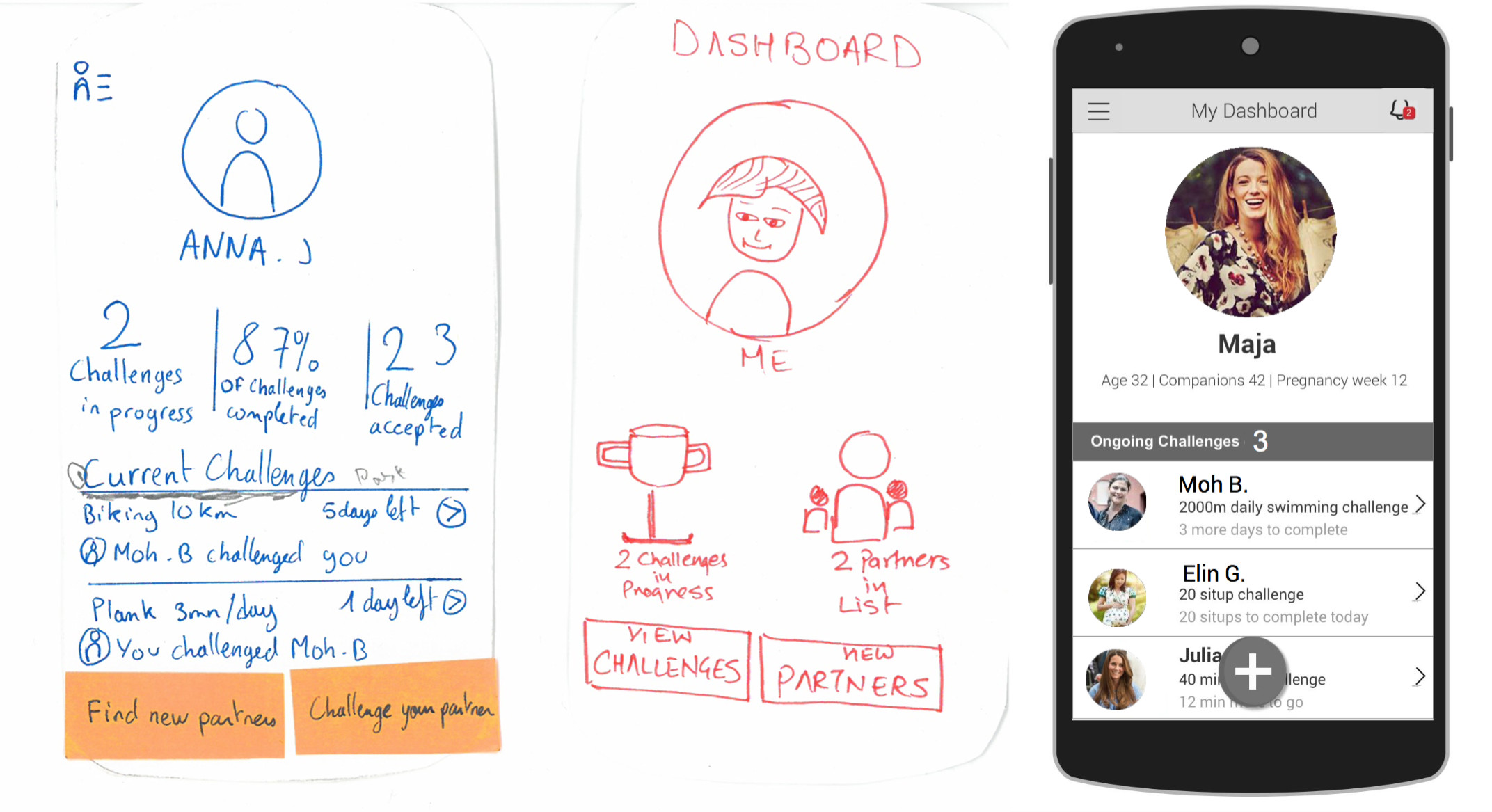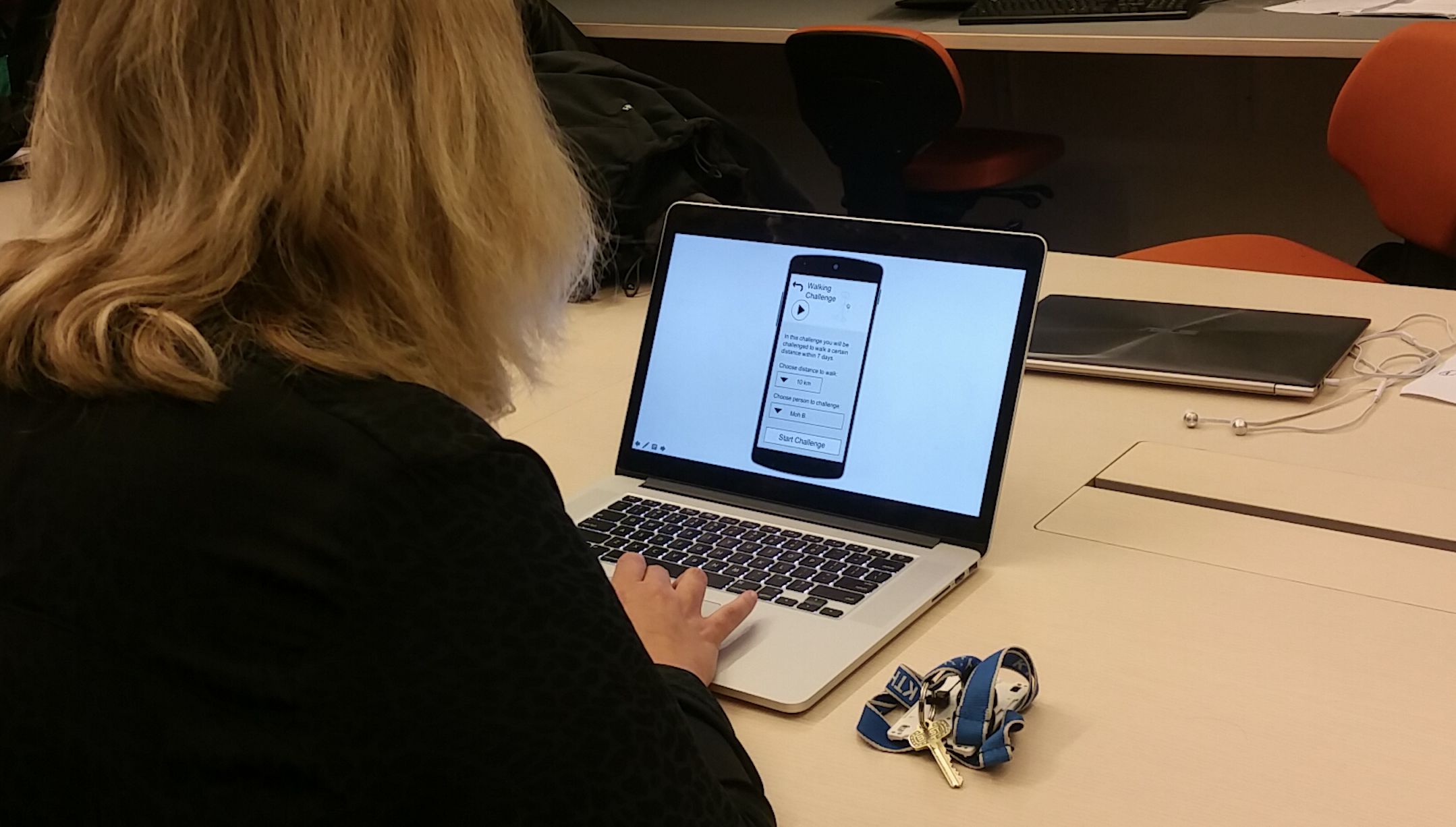companion
motivating pregnant women to exercice


Context
Companion is a mobile application that connects pregnant women to provide emulation and support to engage in physical activity. It was created as the final assignment for an HCI class at the KTH Royal Institute of Technology with the constraint to create a product related to “pregnancy and sport”. The challenge of this project was to go from ideation to high fidelity prototype, with several refinement iterations, over the course of a week and half.
Team: Mikko Honkanen, Yash Todar, Mohit Yadav & Clément Hamon
Problem
The project started by a phase of research when we familiarised ourselves with the subject by setting interviews with women who had been pregnant and gathering medical facts linked to the exercising and pregnancy during secondary research. Findings from this phase were that even if the benefit of exercise during pregnancy was known, women who have been pregnant mentioned how it was difficult to stay consistent with the physical activity. It also came up that according to the different stages of pregnancy, exercise had to be adapted.
We then came up with a set of different ideas during brainstorming. While reviewing ideas, some were combined and a vote took place to select three. We sketched and developed further those concepts to then pick the one that would become Companion.

Evolution of the prototype, from paper to hi-fi digital
Design
Companion is a mobile application, aimed at motivating pregnant women to exercise by connecting them with other pregnant women to challenge each others and create a sporty emulation.
Users can link with other pregnant women who enjoy the same type of activities and challenge them to achieve some activity milestones such as “walking 7km in 4 days”. The app also contains videos for certain exercises to guide the users along, especially emphasising on the specifics of executing it while being pregnant.
We went through several refinement of paper prototypes before refining the UI and creating an interactive prototype using Powerpoint.

Evaluation
We conducted three rounds of testing for the app with a total of five users, of which three had already had kids and one was currently pregnant. We choose to diversify our test users by having not only have women who’d been pregnant but also some that might or were currently expecting. Both groups providing different but important insights, the former with experience and the later as they were more likely to use the app if when it was launched.
During the evaluation, I took on alternatively the role of greeter, facilitator, computer, and observer.

Ongoing evaluation
Conclusion
This project was a huge step, as my first adventure following the user-centered designed process it came with a lot of learnings, some of them by failure. Looking back at it today I would have involved the users earlier in the conceptual phases, rather than only at the interface stage, to make sure that the product we are building is laying on a strong base.